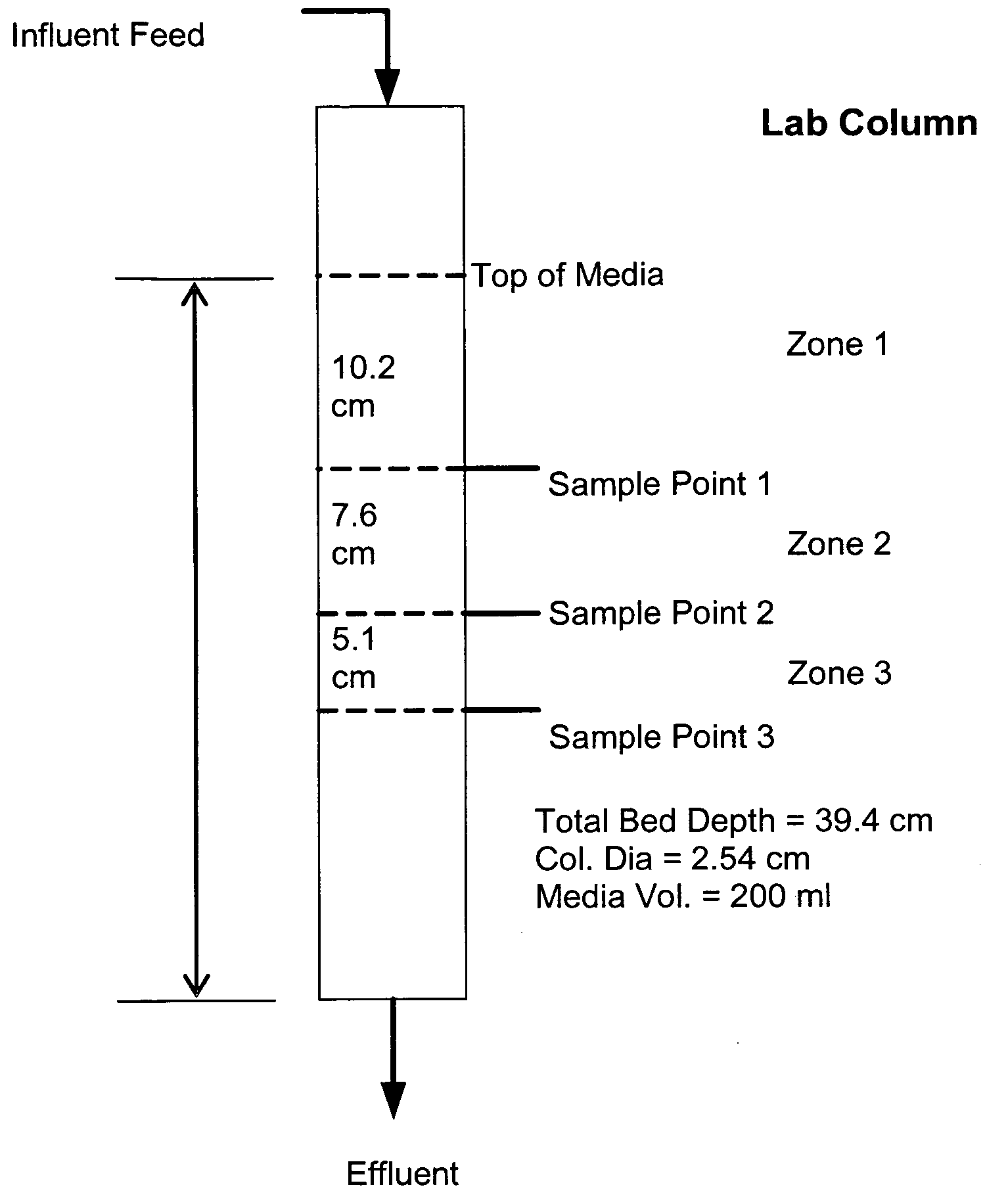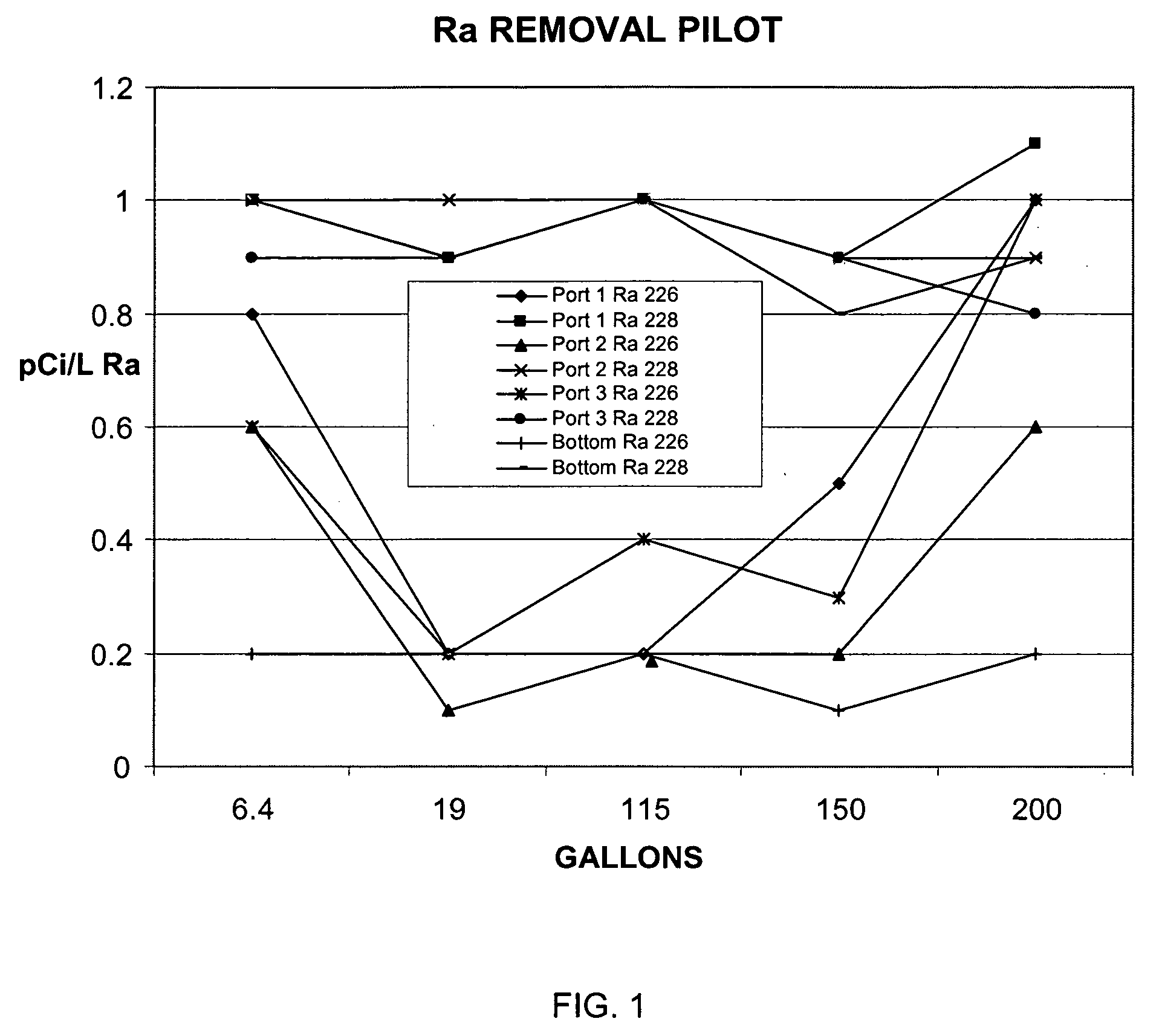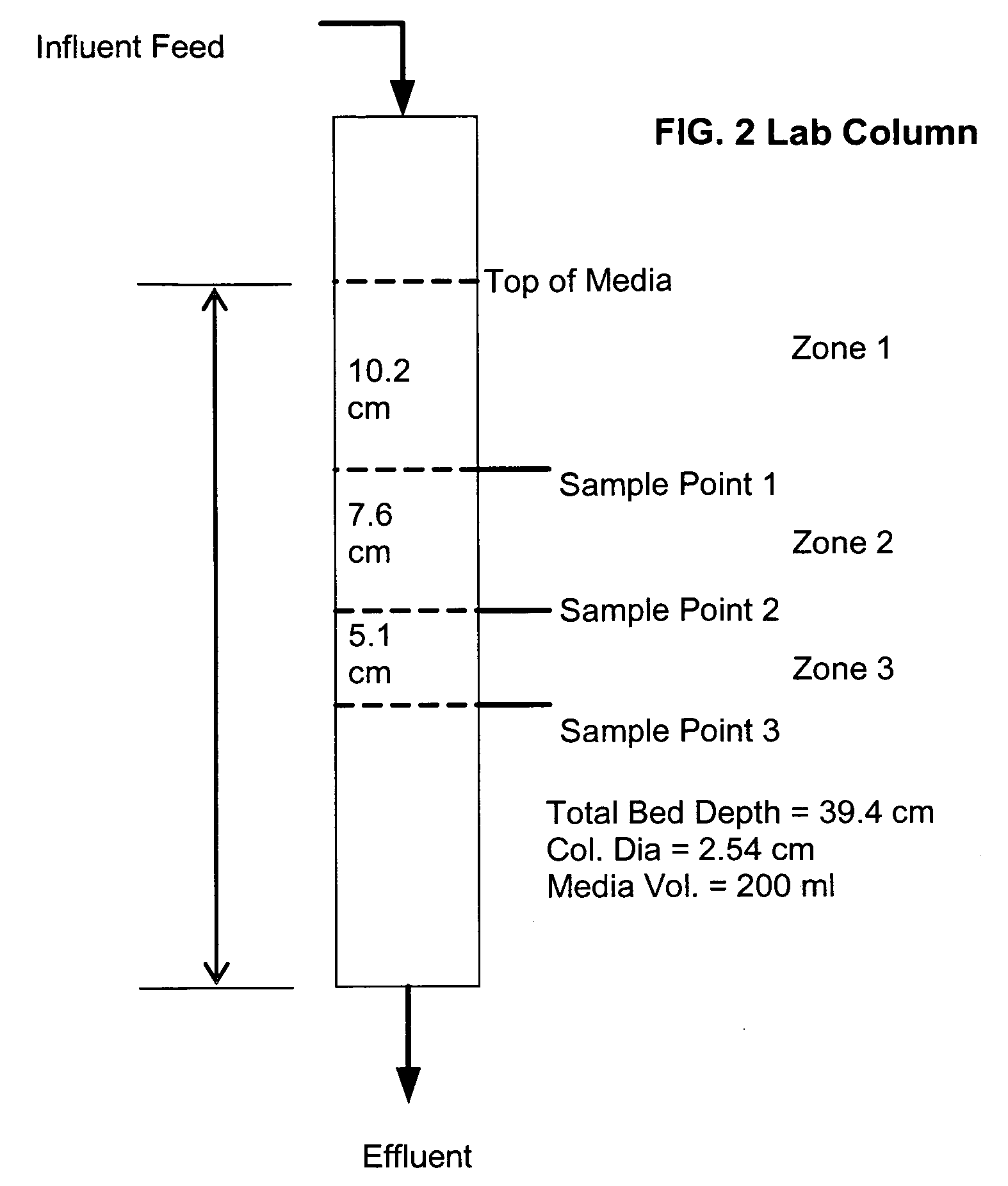Radium selective media and method for manufacturing
a selective media and manufacturing technology, applied in the field of selective media, can solve the problems of significant capital and operating expense for continuous installation and operation
- Summary
- Abstract
- Description
- Claims
- Application Information
AI Technical Summary
Benefits of technology
Problems solved by technology
Method used
Image
Examples
Embodiment Construction
[0026]The media of the present invention is made from a cation ion exchange resin. Since radium exists as cationic species (Ra+2), the preferred polymeric media for removing the radium is a cationic polymeric resin. A cation exchange resin is preferable to avoid charge repulsion effects that might limit the adsorption ability of the resin. Examples of strongly acidic cationic resins with sulfonic functional groups that can be used in the practice of the present invention include the gel type; Rohm & Haas Amberlite IR-120, Dow Chemical's Dowex HGR, Sybron's Ionac CG8, and Purolite C-100. Cationic resins with sulfonic groups that can also be used and have a high level of surface area and large pores are sometimes referred to as macroporous cation resins. Examples that can be used are Rohm & Haas Amberlite IR-200, Dow Chemical's Dowex MSC-1, Sybron's Ionac CFP-110, and Purolite's C-150. Cationic resins can also be used that have special functional groups including carboxylic, iminodiac...
PUM
| Property | Measurement | Unit |
|---|---|---|
| Time | aaaaa | aaaaa |
| Solubility (mass) | aaaaa | aaaaa |
Abstract
Description
Claims
Application Information
 Login to View More
Login to View More - R&D
- Intellectual Property
- Life Sciences
- Materials
- Tech Scout
- Unparalleled Data Quality
- Higher Quality Content
- 60% Fewer Hallucinations
Browse by: Latest US Patents, China's latest patents, Technical Efficacy Thesaurus, Application Domain, Technology Topic, Popular Technical Reports.
© 2025 PatSnap. All rights reserved.Legal|Privacy policy|Modern Slavery Act Transparency Statement|Sitemap|About US| Contact US: help@patsnap.com



